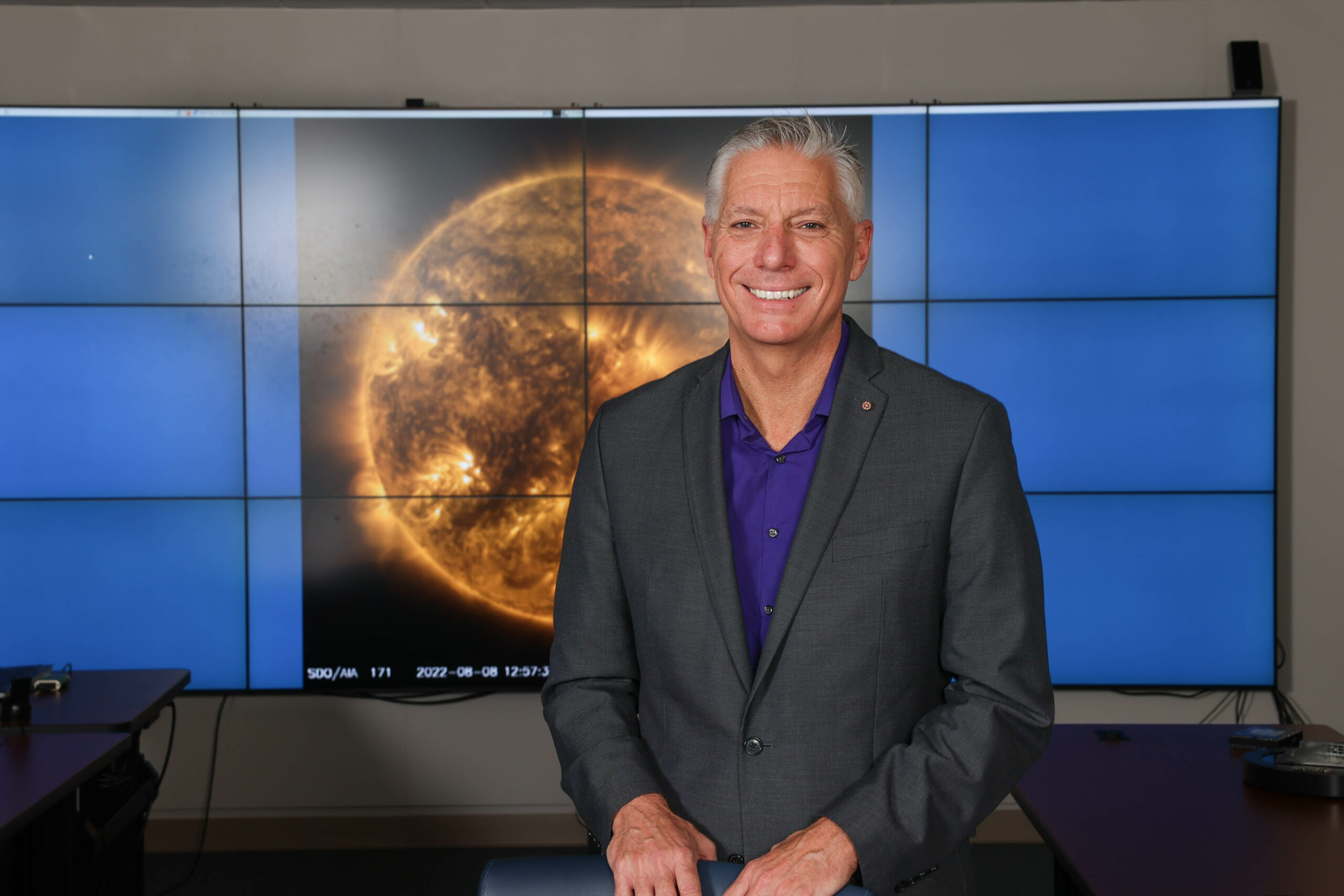HUNTSVILLE — A solar wind theory by an astrophysicist at the University of Alabama in Huntsville has been confirmed by a spacecraft from the European Space Agency.
The solar switchback – a kink in a magnetic field – was observed in March and supports 2020 models by Dr. Gary Zank. The models theorize how the surprising structures in the solar wind originate.
An instrument on the ESA’s Solar Orbiter spacecraft recorded an image of the solar corona that showed a distorted S-shaped kink in the coronal plasma. The image piqued the interest of Dr. Daniele Telloni, National Institute for Astrophysics, Astrophysical Observatory of Torino, Italy, who thought it looked like a solar switchback. Switchbacks are large and long-duration isolated velocity spikes in the solar wind.
“A switchback is basically a propagating kink in a magnetic field, with the most extreme
case being an almost S-shaped kink in the field line that reverses its direction twice,” said Zank, director of the Center for Space Plasma and Aeronomic Research and the Aerojet Rocketdyne chair of the Department of Space Science at UAH. “In other words, it’s a somewhat complicated wave with an unusual wave form.”
Researchers were mystified by the unusual structures when they were noticed on data from NASA’s Parker Solar Probe, an instrument suite featuring a Faraday cup developed by a partnership of UAH, the Marshall Space Flight Center and the Smithsonian Astrophysical Observatory. The cup sits outside the spacecraft’s heat shield, directly sampling particles from the super-hot solar wind.
Parker Solar Probe’s daisy petal-like orbit circles the sun in the same plane as the planets,
while Solar Orbiter crosses the sun’s poles.
Using the Parker Solar Probe data, Zank and his team – Dr. Masaru Nakanotani, a CSPAR postdoctoral research assistant; Dr. Lingling Zhao, a Department of Space Science assistant professor; Dr. Laxman Adhikari, a Department of Space Science research scientist; and Dr. Justin Kasper, an astrophysicist, then at the University of Michigan – created a theoretical model of the switchback’s formation.
Recalling Zank’s earlier paper, Telloni compared images and noted the event matched conditions modeled in Zank’s research.
“When Daniele sent the Metis observation, my immediate reaction was of some astonishment that such a plasma structure could be so clearly observed using remote observations,” said Zank, who is also a co-investigator on the Solar Orbiter’s magnetometer team. “… To see the global structure of a switchback was both unexpected and remarkable after staring at plasma plots and inferring the geometry of a switchback indirectly.
“This is a very strong confirmation of the basic theory I had advanced in our Zank et al 2020 paper.”
The new observation resulted in an American Astrophysics Letter authored by Dr. Telloni
with Zank and others as co-authors.
“In the new Letter, we explored all the current theoretical models that have been advanced
to explain the origin of switchbacks and showed quite definitively that all made predictions
that were not observed,” Zank said. “For example, the spectrum of fluctuations associated with the observed switchback was very monochromatic, ruling out the various turbulence or instability-driven models as a source of switchbacks.
“Consequently, based on the observations and the current existing theories of switchback origin, it appears that the Zank et al 2020 theory is the best explanation we have for the origin of switchbacks based on the observation described in the new Telloni et al Letter.”
Don’t miss out! Subscribe to our email newsletter to have all our smart stories delivered to your inbox.



